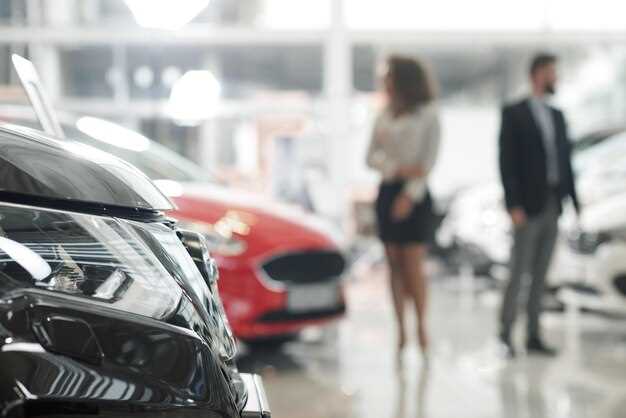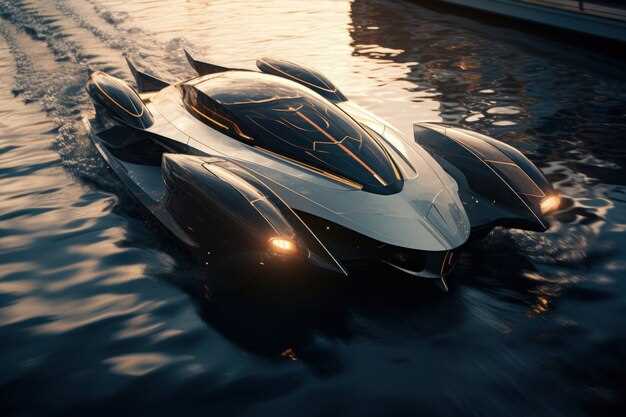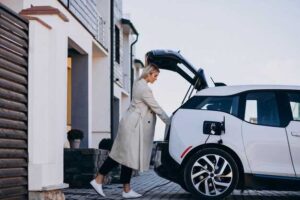Explore cutting-edge innovations transforming luxury automobiles. From advanced driver-assistance systems to electric powertrains, technology shapes every aspect of luxury vehicles, enhancing performance, safety, and comfort.
Consider the impact of artificial intelligence in personalizing driving experiences. AI systems analyze driver behavior, enabling features like smart navigation and adaptive cruise control that improve safety and convenience. Brands like Mercedes-Benz and BMW are leading the way, integrating these technologies seamlessly into their models.
Electric vehicles (EVs) are another critical trend. Luxury car manufacturers are investing heavily in EV technology, not only for sustainability but also for performance. Tesla sets benchmarks with its rapid acceleration and extended range, challenging traditional luxury brands to elevate their offerings.
Connectivity plays a significant role. In-car Wi-Fi, remote access, and integration with smart devices transform how owners interact with their vehicles. In this connected environment, brands are also focusing on data privacy, ensuring users feel secure while enjoying enhanced features.
These examples illustrate how technology transcends mere convenience, redefining the luxury driving experience. As innovations continue to emerge, staying informed on these developments ensures informed decisions when considering your next luxury vehicle.
Smart Infotainment Systems and User Experience Enhancements
Integrating intuitive smart infotainment systems significantly boosts user experience in luxury cars. Modern vehicles now feature large touchscreens, voice commands, and smartphone connectivity. These advancements streamline access to navigation, entertainment, and communication, making every drive more enjoyable.
Voice recognition technology allows drivers to control features hands-free. This increases safety by minimizing distractions. High-quality sound systems enhance audio quality, ensuring that music and navigation prompts come through crystal clear.
Utilize customizable interfaces on infotainment systems. Drivers can tailor their dashboard to prioritize preferred apps and information. Personalization options significantly improve user satisfaction and engagement with the system.
| Feature | Benefit |
|---|---|
| Touchscreen Interface | Simplifies menu navigation and access to applications. |
| Voice Control | Enhances safety by enabling hands-free operation. |
| Smartphone Integration | Allows seamless access to apps and navigation through platforms like Apple CarPlay and Android Auto. |
| Real-Time Updates | Keeps navigation systems accurate with current traffic data. |
| Customizable Profiles | Enables users to set preferences for seating, climate, and infotainment features. |
Regular software updates enhance system performance and security. They offer new features and keep the experience fresh. Consider vehicles with over-the-air update capabilities for convenience, as they eliminate the need for dealership visits.
Lastly, prioritize models equipped with advanced driver assistance systems (ADAS). These systems complement infotainment by providing alerts and feedback, further enriching the driving experience while enhancing safety.
Electric Vehicles: The Shift Towards Sustainable Luxury
Electric vehicles (EVs) redefine luxury by integrating advanced technology and sustainability. High-end brands like Tesla, Porsche, and Audi lead the charge with models that showcase performance and eco-friendliness. The Tesla Model S boasts a 0-60 mph time of just 1.99 seconds, combining speed with zero emissions.
Luxury features embraced by EVs include state-of-the-art infotainment systems and cutting-edge driver-assistance technologies. The Audi e-tron offers a virtual cockpit, enhancing user experience while driving. Brands prioritizing performance and luxury can no longer overlook the importance of sustainable materials, as seen in BMW’s use of recycled plastics and natural fibers in their i3 and i4 models.
Charging infrastructure plays a crucial role in luxury EV acceptance. Companies invest in fast-charging networks to alleviate range anxiety. For example, Porsche’s Electrify America stations allow for extensive coverage and faster recharges. This convenience significantly enhances the ownership experience.
Luxury EVs feature comprehensive software updates that continuously improve performance and add features. Similarly, collaborations with tech companies enhance connectivity and safety. Mercedes-Benz’s EQ lineup integrates advanced AI systems for real-time navigation and traffic management, ensuring both luxury and functionality.
As climate change awareness rises, eco-conscious consumers increasingly favor sustainable luxury. The transition to electric vehicles doesn’t compromise style or performance; rather, it elevates the driving experience. Consequently, luxury brands must adapt quickly to remain relevant in this shifting paradigm.
Luxury is now associated with innovation and environmental sustainability. The blend of superior technology, eco-friendly design, and exceptional performance makes electric vehicles the pinnacle of modern luxury. Investing in an electric luxury car represents a commitment to both extravagance and the planet’s future.
Autonomous Driving Features and Their Impact on Safety
Implementing autonomous driving features significantly enhances safety on the roads. Vehicles equipped with advanced driver-assistance systems (ADAS) utilize sensors, cameras, and artificial intelligence to detect potential hazards, dramatically decreasing the likelihood of accidents. These technologies provide real-time analysis of surroundings, ensuring proactive responses to possible dangers.
Adaptive cruise control exemplifies one of the pivotal innovations, maintaining an optimal distance from the vehicle ahead. This feature reduces the risk of rear-end collisions by automatically adjusting speed based on traffic conditions. Lane-keeping assistance complements this by preventing unintentional lane departures, which can be crucial on highways or busy streets.
Automatic emergency braking (AEB) systems offer additional protection. By assessing imminent collision risks, these systems engage brakes without driver intervention. Studies indicate that AEB can reduce crash rates by 50%, demonstrating its effectiveness in mitigating severe accidents.
Another remarkable feature is pedestrian detection technology. This capability identifies pedestrians in the vehicle’s path, triggering alerts to the driver and, if necessary, activating brakes to prevent accidents. Such enhancements not only safeguard pedestrians but also boost driver awareness.
Data collected from connected vehicles plays a role in refining these technologies. Analyzing driving patterns and incidents helps manufacturers improve algorithms, ensuring continual advancements in safety measures. This iterative learning process results in more reliable systems in future models.
Ultimately, embracing these innovations contributes to fewer road accidents and safer driving experiences. The integration of autonomous driving features transforms luxury cars from mere transportation means into advanced safety systems, redefining standards in vehicle safety and performance.
Advanced Material Technologies in Luxury Car Manufacturing
Luxury car manufacturers increasingly utilize advanced material technologies to enhance performance, safety, and aesthetics. Carbon fiber, lightweight metals, and composites play a vital role in reducing vehicle weight while improving structural integrity. For instance, carbon fiber components can reduce weight by up to 50% compared to traditional materials without sacrificing strength.
Aluminum alloys are another popular choice, known for their resistance to corrosion and high strength-to-weight ratio. Many high-end manufacturers are integrating aluminum structures in body panels and chassis, which not only enhances fuel efficiency but also promotes agile handling.
Composite materials combine various elements to create tailored properties suited for specific applications. These are particularly useful in high-performance luxury vehicles, where engineers focus on maximizing performance characteristics while minimizing weight. Innovations in polymer-based composites allow for greater design flexibility and complexity in vehicle body design, ultimately adding to the visual appeal.
Further advancements in material technologies include the use of smart materials that can adapt to environmental conditions. Shape memory alloys, for example, can return to a predetermined shape when heated, offering unique possibilities for design features and safety mechanisms.
Investing in research around sustainable materials reflects a growing awareness of environmental impact. Recycled materials and bio-based composites emerge as viable options, enabling manufacturers to appeal to eco-conscious consumers while maintaining luxury standards.
By prioritizing these advanced materials, luxury car brands boast not only superior performance but also enhanced comfort and safety for drivers and passengers. This strategic approach keeps them at the forefront of the automotive industry, merging innovation with luxury seamlessly.
Personalization and Customization Through Digital Innovations
Utilize advanced software solutions for creating tailored driving experiences. Manufacturers offer apps that allow buyers to personalize vehicle settings, from ambient lighting to seat configurations, right from their smartphones.
- Adaptive Climate Control: Some luxury models now feature automatic climate zones that adapt to individual preferences based on occupant detection, learning behavior over time.
- Seat Adjustments: Vehicles equipped with memory foam and multi-directional adjustments provide a custom-fit feel, accommodating different body types and driving preferences.
- Sound Systems: High-quality audio systems integrate with user libraries, enabling sound profiles that suit each driver’s taste, enhancing the auditory experience.
Implement virtual reality (VR) and augmented reality (AR) to guide customers through customization processes. These technologies allow potential buyers to visualize their choices, from exterior color to interior materials, before making decisions.
- Access a virtual showroom where various options can be viewed in a lifelike environment.
- Use AR features on mobile devices to see how different interior materials look in real-time within a model.
Artificial intelligence (AI) personalizes the driving experience by learning driver habits. It suggests routes based on past journeys and anticipates needs such as refueling based on driving patterns. This level of personalization creates a seamless integration of technology and driver preferences.
Integrate connected car technologies that allow for a high degree of personalization. Features like remote start and geofencing enhance convenience and security, catering to user preferences for vehicle access and operation.
- Remote Start: Customize pre-start settings for climate control and seating adjustments to ensure comfort upon entering the vehicle.
- Geofencing: Receive alerts if the vehicle exceeds set geographical boundaries, ensuring peace of mind regarding vehicle safety.
Finally, seek platforms that offer extensive online configurators where users can experiment with various combinations of features, colors, and finishes, allowing for a highly personalized experience tailored to individual taste and lifestyle.
Integration of Connectivity: The Role of IoT in Luxury Vehicles
Luxury vehicles increasingly incorporate IoT connectivity, enhancing user experience and vehicle performance. This integration allows for real-time updates, remote diagnostics, and seamless interactions between the car and its owner.
Modern luxury cars support features such as:
- Remote Access: Owners can control functions like locking, starting, and climate management via mobile apps, ensuring convenience at their fingertips.
- Predictive Maintenance: IoT sensors monitor vehicle health, alerting drivers about potential issues before they escalate, thus reducing repair costs and downtime.
- Personalization: Vehicles adapt to individual preferences, from seat settings to infotainment choices, creating a tailored environment for each trip.
- Enhanced Safety: Connected features provide real-time data on traffic conditions, weather, and hazards, improving decision-making on the road.
Luxury car manufacturers utilize advanced data analytics to refine these features. For instance, by analyzing driving patterns, manufacturers can offer personalized suggestions, enhancing the overall driving experience.
As technology evolves, luxury vehicles will likely integrate more sophisticated IoT systems. Features like automated driving assistance, intelligent navigation, and integrated shopping services are already being explored. These advancements will not only improve safety but also redefine customer expectations in the automotive market.
For luxury car enthusiasts, investing in models equipped with IoT capabilities translates to a significant upgrade in both convenience and functionality. Staying informed about the latest trends in connected technology will empower buyers to make informed choices that align with their lifestyles.






